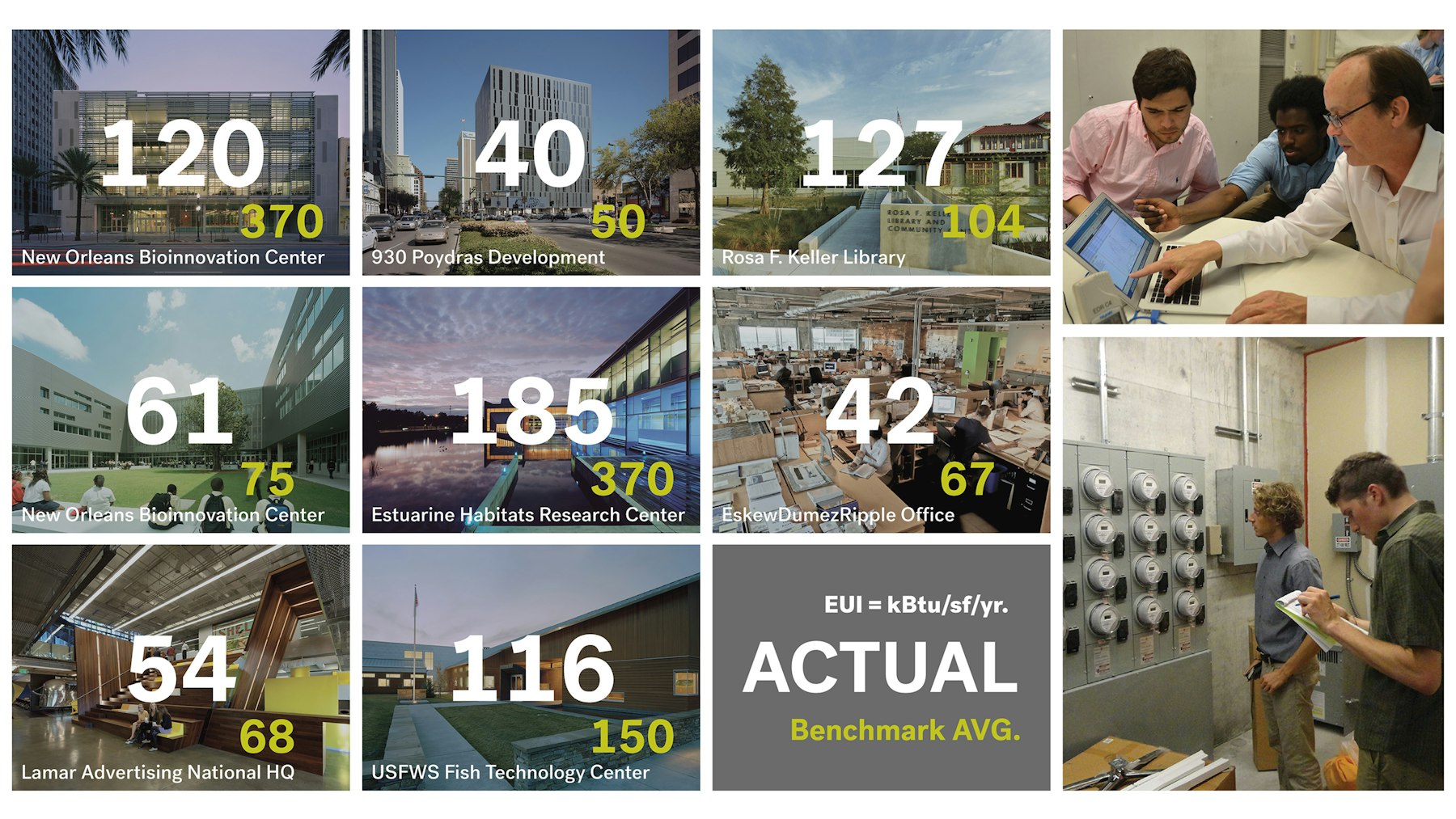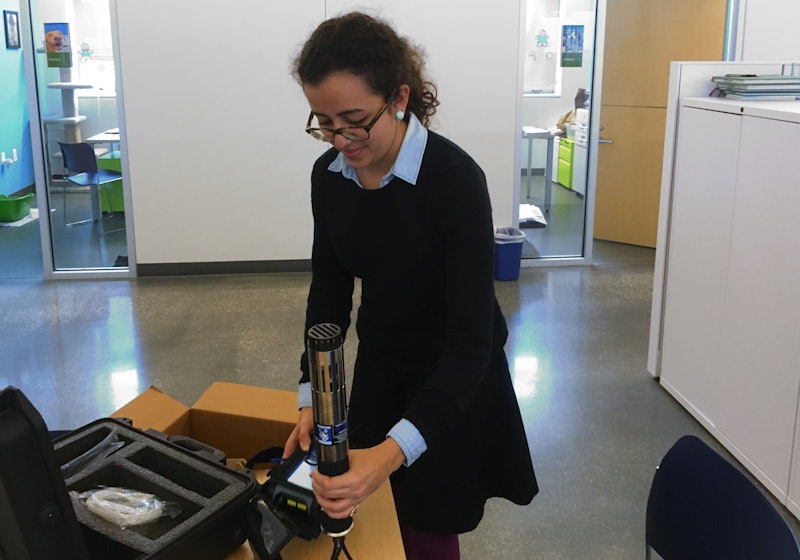
Post-Occupancy Engagement
“Architects date buildings, but building operators...we marry them.” This paraphrased quote came from a New Orleans facilities manager and accurately reflects the need for more substantial post occupancy engagement from the architectural profession. The status quo solicits little follow-up from architects after the building is built, which represents a huge missed opportunity to learn about the successes or failures of our design efforts along with verifying energy performance.
Long-Term Relationships
A unique aspect of our sustainable design program actually comes after our clients have occupied the building. Since 2006, EDR has been conducting long term engagement on projects after substantial completion. We continue to look for ways to enhance the breadth and depth of our engagement efforts. Over the last several years we have built a toolkit of monitors, tracking processes, and data inputs to help us evaluate how our designs are really working. We look at three core areas – occupant satisfaction, energy consumption, and cost effectiveness.
Learning Together
We bring a tradition of long-term post-occupancy engagement, where designers and contractors monitor air quality, thermal, and lighting performance and provide opportunities for surveying occupant comfort—to produce a building that learns from its occupants, and occupants who can learn from the building. Our Director of Sustainability and Building Performance, Z Smith, has long been a proponent of “closing the loop” between design and performance, and how this is changing practices nation-wide. His paper "Long Term Relationships: When Design Teams Engage in Multi-Year Building Performance Monitoring" explored the benefits to both owners and designers alike.
A History of Post-Occupancy Engagement
The following matrix represents a sampling of some projects EDR has engaged in post-occupancy activities. In the center of each thumbnail, EDR has calculated the projects’ actual Energy Use Index (kBtu/sf-yr) from collected utility bills. The lower right-hand number (in green) represents the national or regional benchmark for comparison. In many, substantial post occupancy engagement beyond energy benchmarking were completed, such as energy audits, temperature monitoring, submetering, etc.

With our Director of Building Performance and Sustainability, Sustainability Enabler, and sustainability champions in each design team, we strive to execute the following types of post occupancy efforts on all our projects.
- Energy Benchmarking - As architects, if we are truly concerned with saving our clients' money through energy efficiency, and if we aspire to be environmental stewards by reducing emissions, then understanding how our buildings actually perform is mandatory. To form the most comprehensive picture of energy performance, we document energy benchmarks and simulated performance throughout the design process, and collect utility bills as part of long term engagement. These comparisons between our design intent and actual performance provide the feedback loop needed to produce high performance outcomes for our clients.
- Building Manuals - Like any piece of sophisticated machinery, buildings need manuals too. However, they need manuals that go beyond mere documentation and address how to operate the building in the most efficient manner possible. Much of the discrepancy between modeled and observed energy performance can be attributed to the variability of how buildings are occupied and operated. We have observed on one of our multifamily projects, 930 Poydras, that energy usage by tenants can vary by a factor of 2 for similarly sized apartment units. This variability underscores the need for architects to take a leadership position on coordinating building operation manuals and occupant guides. These types of documents and training strategies go a long way in educating the building’s inhabitants about behavioral strategies that lead to realized and persistent savings.
- Post Occupancy Evaluations - Our notion of “high performance” goes beyond how buildings use energy and spans into how interior environments affect occupant comfort, satisfaction, and productivity. According to the Center for the Built Environment, over 90% of the total operating cost of commercial office buildings is attributed to the cost of employee salaries. Thus, how can we ensure how designs perform without collecting qualitative data (occupant comfort surveys) and relating this to monitored environmental variables (temperature, humidity, carbon dioxide, overall energy use, etc.)? In 2012 EDR purchased a variety of logging equipment and have used it widely to instrument a variety of buildings and gain insight into the dynamic between energy and occupant comfort.









